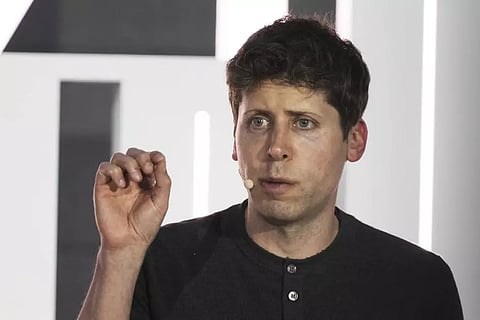

By MATT O’BRIEN
LONDON: Spend enough time with ChatGPT and other artificial intelligence chatbots and it doesn’t take long for them to spout falsehoods. Described as hallucination, confabulation or just plain making things up, it’s now a problem for every business, organisation and high school student trying to get a generative AI system to compose documents and get work done. Some are using it on tasks with the potential for high-stakes consequences, from psychotherapy to researching and writing legal briefs. “I don’t think that there’s any model today that doesn’t suffer from some hallucination,” said Daniela Amodei, co-founder and president of Anthropic, maker of the chatbot Claude 2. “They’re really just sort of designed to predict the next word,” Amodei said. “And so there will be some rate at which the model does that inaccurately.”
Anthropic, ChatGPT-maker OpenAI and other major developers of AI systems known as large language models say they’re working to make them more truthful. How long that will take — and whether they will ever be good enough to, say, safely dole out medical advice — remains to be seen. “This isn’t fixable,” said Emily Bender, a linguistics professor and director of the University of Washington’s Computational Linguistics Laboratory. “It’s inherent in the mismatch between the technology and the proposed use cases.”
A lot is riding on the reliability of generative AI technology. The McKinsey Global Institute projects it will add the equivalent of $2.6 trillion to $4.4 trillion to the global economy. Chatbots are only one part of that frenzy, which also includes technology that can generate new images, video, music and computer code. Nearly all of the tools include some language component.
Google is already pitching a news-writing AI product to news organisations, for which accuracy is paramount. The Associated Press is also exploring use of the technology as part of a partnership with OpenAI, which is paying to use part of AP’s text archive to improve its AI systems.
In partnership with India’s hotel management institutes, computer scientist Ganesh Bagler has been working for years to get AI systems, including a ChatGPT precursor, to invent recipes for South Asian cuisines, such as novel versions of rice-based biryani. A single “hallucinated” ingredient could be the difference between a tasty and inedible meal. When Sam Altman, the CEO of OpenAI, visited India in June, the professor at the Indraprastha Institute of Information Technology Delhi had some pointed questions.
“I guess hallucinations in ChatGPT are still acceptable, but when a recipe comes out hallucinating, it becomes a serious problem,” Bagler said, standing up in a crowded campus auditorium to address Altman on the New Delhi stop of the US tech executive’s world tour.
“What’s your take on it?” Bagler eventually asked. Altman expressed optimism, if not an outright commitment. “I think we will get the hallucination problem to a much, much better place,” Altman said. “I think it will take us a year and a half, two years. Something like that. But at that point we won’t still talk about these. There’s a balance between creativity and perfect accuracy, and the model will need to learn when you want one or the other.”
But for some experts who have studied the technology, such as University of Washington linguist Bender, those improvements won’t be enough. Bender describes a language model as a system for “modeling the likelihood of different strings of word forms,” given some written data it’s been trained upon.